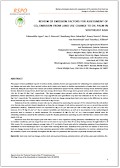| Report |
 |
|
| Title | Review of emission factors for assessment of CO2 emission from land use change to oil palm in Southeast Asia | | Author | Fahmuddin Agus, Ian E. Henson, Bambang Heru Sahardjo, Nancy Harris, Meine van Noordwijk and Timothy J. Killeen | | Editor | Timothy J. Killeen and Jeremy Goon | | Year | 2013 | | Institution | Roundtable on Sustainable Palm Oil (RSPO) | | City | Kuala Lumpur, Malaysia | | Number of Pages | 22 | | Call Number | RP0305-15 | | Keywords | land cover, land use change, carbon stock, above ground biomass, emissions factor, soil carbon, peat, peat oxidation, fire |
|
| Abstract: |
This paper reviews published reports of carbon stocks, emission factors and approaches for estimating CO2 emissions from land use change and peat soils. Above ground carbon stock values were based on studies representative of major land cover types for Indonesia, Malaysia and Papua New Guinea and include undisturbed upland forests, undisturbed swamp forest, disturbed upland forests, disturbed swamp forest, shrub land and swamp shrub land, with average above ground carbon stock values of 189, 162, 104, 84, 30 and 28 Mg C ha-1, respectively. The time-averaged above ground carbon stock for oil palm plantations, rubber plantations, timber plantations, mixed tree crops (agroforest) and agricultural crop land was estimated at 36, 56, 44, 54 and 11 Mg C ha-1, respectively. The emissions factors linked to land use change among these land cover types is the difference in carbon stocks between any two of these values converted to Mg CO2 ha-1.
Emissions from the oxidation of peat soils can be estimated by measuring the amount of CO2 released from the soil surface over discrete time periods (closed chambers), or from the net changes of soil carbon measured over one or several time periods (subsidence studies). Emissions factors are expressed in Mg of CO2 per unit area per unit of time (Mg CO2 ha-1 yr-1) and vary between 20 to 95 Mg CO2 ha-1 yr-1 due to natural variability and disturbance, as well as to uncertainties in the methodological protocols used to measure or model emissions. We recommend 43 Mg CO2 ha-1 yr-1 as a time-averaged default value for estimating emissions caused by the oxidation of peat for oil palm plantations operating on peat soils that have a mean water table depth of 60 cm.
Emissions from fires that impact peat soils when used to clear vegetation during plantation establishment vary depending on weather conditions, and can range from zero in wet years to up to more than 50 cm deep during extreme drought linked to El Niño events. We recommend using an average value of 15 cm depth of burnt peat soils for estimating emissions from plantations established on forest landscapes and 5 cm depth when clearing shrub land. Emissions from peat fires are similar to those from land use change, because both are one-time emissions generated while establishing a new plantation. In contrast, emissions from the oxidation of peat recur annually throughout the life time of a plantation that operates on partially drained peat soils. |
|